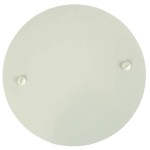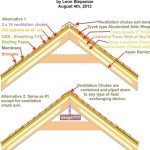How to Measure Room for a Ceiling Fan
Installing a ceiling fan is a great way to enhance comfort and energy efficiency in your home. However, before you head to the store, it's crucial to measure your room to ensure the fan you choose is the right size and will fit properly. Incorrect sizing can lead to inadequate airflow, noise issues, and even safety concerns. This guide will walk you through the essential measurements needed to select the perfect ceiling fan for your space.
1. Determine the Room Size
The first step is to determine the square footage of the room where you plan to install the fan. This information will help you choose a fan with the appropriate blade span. Here's how to measure your room:
- Measure the length and width of the room: Use a measuring tape to measure the longest and shortest sides of the space. Be sure to measure to the furthest points of the room, including any alcoves or nooks.
- Multiply length by width: Once you have the length and width measurements, multiply them together to get the square footage of the room. For example, if the room is 12 feet long and 10 feet wide, the square footage is 120 square feet (12 feet x 10 feet = 120 square feet).
Once you know the square footage, you can use a ceiling fan sizing guide to determine the recommended blade span for your room. Generally, smaller rooms require fans with smaller blade spans, while larger rooms benefit from fans with larger blade spans. Here's a basic guideline:
| Room Size (square feet) | Recommended Blade Span (inches) |
|---|---|
| Up to 75 square feet | 36 inches |
| 75-144 square feet | 42 inches |
| 144-225 square feet | 52 inches |
| 225-400 square feet | 52-72 inches |
Keep in mind that these are just general guidelines. The ideal blade span for your room may vary depending on factors such as ceiling height, window placement, and personal preference. It's always best to consult with a professional electrician or fan specialist if you have any questions or concerns.
2. Measure Ceiling Height
Ceiling height is another crucial factor to consider when choosing a ceiling fan. The fan's overall height, including the downrod and blades, must be compatible with the room's ceiling height.
To measure your ceiling height, follow these steps:
- Find the lowest point of the ceiling: This could be a beam, a light fixture, or a soffit. Measure from the floor to the lowest point of the ceiling.
- Consider the fan's overall height: The overall height of a ceiling fan typically ranges from 12 to 24 inches, depending on the model and downrod length. You can find this information on the fan's product specifications or by asking a sales associate.
- Calculate the remaining clearance: Subtract the fan's overall height from the ceiling height to determine the remaining clearance. This clearance is the space between the fan's blades and the floor.
Ideally, you want at least 7 feet of clearance between the fan blades and the floor. This ensures adequate airflow and prevents any potential hazards. If your ceiling height is less than 8 feet, a shorter downrod or a fan with a smaller blade span may be necessary.
3. Measure Existing Light Fixture
Many homes have a pre-existing light fixture in the area where you want to install a ceiling fan. Depending on the type of fan you choose, you may need to replace the existing fixture or modify it to accommodate the fan's wiring and mounting plate.
To prepare for this, you'll need to measure:
- The size of the existing electrical box: The electrical box must be large enough to accommodate the fan's wiring and mounting plate. Most ceiling fans require a box with a minimum diameter of 4 inches.
- The location of the electrical box: The electrical box should be centrally located in the space where you want to install the fan. If it's too far off-center, you may need to hire an electrician to relocate it.
- The type of wiring: Verify the type of wiring in the existing light fixture. Most ceiling fans require 14-gauge or 12-gauge wiring.
If you are unsure about any of these measurements or if you need to modify the existing wiring, it's always best to consult with a qualified electrician. They can ensure safe and proper installation of your new ceiling fan.

Ceiling Fan Size Guide Delmarfans Com

Ceiling Fan Size Guide Delmarfans Com

How To Buy A Ceiling Fan Four Step Guide Lamps Plus

How To Measure A Ceiling Fan Hunter

How To Measure For A Ceiling Fan Temecula Handyman

Ceiling Fan Size Guide Delmarfans Com

How To Measure A Ceiling Fan Hunter

How To Size A Ceiling Fan 7 Steps With S Wikihow

How To Measure A Ceiling Fan Hunter

How To Measure For A Ceiling Fan The Home
See Also








